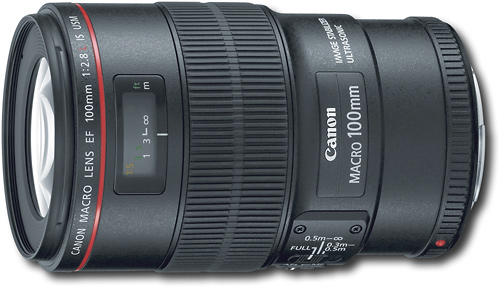My personal Photography Gear
My personal Photography Gear
Gear I use for different Photography Genres
I am an all Canon Photographer and own a full-frame mirrorless 30.3 MP Canon EOS R with EF-Adapter to be able to use my existing Pro L-Series EF-Lenses. Although I prefer Canon lenses, nowadays for certain focal ranges I do consider the high quality professional ART series of lenses from Sigma and the SP G2 generation of lenses from Tamron.
Both companies used to be more for the enthusiast and entry level photographer and made good quality lenses for very affordable prices. But with their new generation of lenses, they deliver professional superb quality that rivals Canon, Nikon and Sony lenses in certain focal ranges.
Most important to me though when photographing out in the field, aside from high quality glass, is the superb weather sealing of all Canon Pro L-Series lenses that most other lens manufactures lack.
Landscape/Nature Photography
- Canon EF 16-35mm f/2.8L II USM
- Canon EF 24-105mm f/4L IS II USM
- Canon EF 70-200/2.8 L IS III USM
Ultra-Wide-to-Wide Angle Zoom Range 16-35mm
The Ultra Wide Angle 16-35mm I use for great wide vista shots to capture most of the landscape and due to the wide open aperture of f/2.8 also usable for Astro Photography.
Wide-to-telephoto Zoom Range 24-105mm
My landscape go-to lens though is the 24-105mm f/4.0. It’s an allrounder, it has a great focal length zoom range from wide angle, standard, to telephoto. For landscape you’ll typically want to use a higher f- stop, or narrow aperture, to get more of your scene in focus. Generally, you’ll want to shoot in the f/8 to f/11 range, topping out at around f/16. So its aperture f/4.0 is more than enough.
The 24-105mm f/4.0 also is my standard lens for panorama photography. Depending on the scenery it allows me to either shoot a single row 24mm panorama, or a multi-row in 50mm, which approximates the human visual perspective. For a even higher resolution panorama or objects farther away I use a multi-row panorama in the 100mm range. As a note, most all of my panoramas are shot in portrait orientation.

Telephoto Zoom Range 70-200mm
The 70-200mm is great for isolating subjects in a wide landscape and highly compresses the foreground and background. Wide Angle lenses push the subject and background further away whereas telephoto lenses bring the subject and the background closer to the viewer.
Cityscape/Architectural Photography
- Canon EF 16-35mm f/2.8L II USM
- Canon EF 24-105mm f/4L IS II USM
- Canon EF 70-200/2.8 L IS III USM
Ultra-Wide-to-Wide Angle Range 16-35mm
For architectural interior shots where space is limited or sweeping cityscape vista shots an ultra-wide angle lens is best suitable. As focal length decreases (moves toward the wide angle direction), depth of field increases. As focal length increases (moves toward the telephoto direction), depth of field decreases. Since a wide-angle lens has a greater depth of field, it can give both a sharp foreground and a sharp background. 24-35mm is my most used focal length for Cityscape photography.

Wide-to-Telephoto Zoom Range 24-105mm
This also is my go-to-lens for cityscape photography. 24mm-35mm wide-angle focus length is wide enough to capture a wide city view and if needed I can take a single row panorama of 2-3 images in portrait or two rows, each 2-3 images in landscape orientation depending on intended image frame size. The standard wide-angle range from 24mm-35mm is my favorite and most used focal length in cityscape photography and has very little distortion compared to an ultra-wide angle range 14-16mm would have.
The focal range from 40-55mm is close to the human eye’s perspective which I use when applicable depending on the motive.
The Telephoto focal range of 60-105mm I use occasionally to punch into a scene to further isolate a subject.
Telephoto zoom range 70-200mm
I rarely use this focal length for cityscape photography unless I am further away from the main subject and want to compress the subject in the foreground with a subject in the background, for instance a bridge and a cathedral in the distance.

Portrait Photography
- Sigma Art 24mm f/1.4 Prime Lens
- Sigma Art 35mm f/1.4 Prime Lens
- Sigma Art 50mm f/1.4 Prime Lens
- Canon EF 50mm f/1.2 L USM Prime Lens
- Canon 100mm Macro f/2.8 Prime Lens
- Canon EF 70-200 f/2.8 L IS III USM
Macro/Close-up Photography
- Canon 100mm Macro f/2.8 Prime Lens
- Canon EF 70-200 f/2.8 L IS III USM
My absolute favorite Close-up prime lens is the 100mm Macro f/2.8 which I use predominantly for all my Flower Macro Photography. It has a true macro magnification ratio of 1:1, meaning the object you are photographing in real life is the same size as on your camera sensor. With a wide open aperture of f/2.8 it has a very shallow depth of field and creates a beautiful bokeh with a soft out-of-focus background and an artistic interplay of sharpness and blur.
In situations where the subject might be further away e.g. a water lilies on a pond or to create an even more dramatic background blur to isolate the subject, I occasionally use the 70-200mm at the far end of its focal length.

Street/Life-Style Photography
- 35mm Prime
- Canon 24-70 f/2.8 L USM
- 50mm f/1.4 Sigma Art
Journalism Photography
- 35mm Prime
- 24-70mm f/2.8
Canon EOS R Full-Frame Mirrorless Camera
Fast, pin-sharp focusing
EOS R offers a full-frame 30.3 Megapixel Dual Pixel CMOS AF sensor which focuses without compromise thanks to its advanced phase detection system allowing the user to select between 5655 AF positions. It uses the vast majority of the sensor’s pixels (80% of the horizontal pixels and 100% of the vertical) to result in super-fast autofocus for stills as well as smooth focus tracking when you’re shooting video and uses a DIGIC 8 for processing.
Eye AF in tracking mode for pin-sharp eyes
The Face Detection and Tracking function has been around for over a decade, but Canon has gone one step further with Eye AF, introduced on the Canon EOS RP and added to the Canon EOS R via a firmware update. It enables the camera to identify and lock focus on the subject’s eyes, which of course are a key part of portraits.
A truly silent camera
In situations where you want to shoot with complete discretion, the click of a camera’s shutter firing can alert your subject and wreck a great opportunity. This is as true for informal wedding photography as it is for shooting wildlife at close range. EOS R is the first Canon camera to offer a totally silent shooting mode, so you can take pictures without ever disturbing the subject.
Professional-level filmmaking
EOS R offers the same high level of 4K video features found in the EOS 5D Mark IV, plus advanced upgrades such as noise reduction to improve high ISO performance.
EOS R offers UHD 4K video output in 10-bit via HDMI, which gives highly detailed, uncompressed, footage. You can also use the Canon Log feature for extended dynamic range, which allows maximum editing flexibility when grading in post-production.
With a high-speed and wide lens mount, Canon EOS R is an interchangeable lens camera that’s compatible with the new era of RF lenses which have been designed to work at the optimum distance from a full-frame sensor.
EOS R also features the Dual Pixel RAW function, first introduced in the EOS 5D Mark IV. Used with Canon Digital Photo Professional software, it allows you to fine-tune sharpness and change the viewpoint or foreground bokeh for a more pleasing result in post-production.
For photographers and filmmakers who already own a range of EF and EF-S lenses, the Canon EOS R offers full compatibility via an adapter with no loss of performance or quality.
Vari-angle touch screen
EOS R’s 3.15-inch Vari-angle touch screen is bright and clear with an incredible 2.1 million dots to render high resolution images and recorded movies with amazing sharpness and clarity. It can be adjusted to a wide range of angles to help you shoot difficult-to-access subjects
A viewfinder with a difference
Shooting with EOS R’s 3.69 million dot Electronic Viewfinder (EVF) enables you to see 100% of the scene and, because you’re holding it to your eye, it gives you a more traditional shooting experience. It also brings added benefits which you don’t get with a traditional optical viewfinder: you can view how the final image will look in real time and see your subject clearly even when it’s in near-darkness. When you don’t have the viewfinder to your eye, a built-in sensor automatically switches the image to the screen, saving battery power. The viewfinder can also be used for video in bright light, making it much easier to switch from shooting stills to video.
Focusing features
When you’re shooting with the EVF, you can quickly and accurately select the AF area by using Touch and Drag focusing. Using this function, you can effectively use the touch screen as a touch pad while you look through the viewfinder. And when your subject is better suited to manual focusing, use EOS R’s focus magnification or focus peaking features for higher accuracy over sharpness.
Tough, durable, weather-sealed body
EOS R’s tough magnesium alloy body offers a high standard of protection. Its advanced dust and moisture resistance makes it Canon’s 1st weather resistant mirrorless camera.
Transfer and back-up on the move
EOS R can automatically send images direct to a paired phone, tablet or computer via the Canon Camera Connect app via Wi-Fi connection to your mobile, or to your computer. It’s a useful function for anyone who needs to instantly back-up their work, such as photojournalists working in sensitive shooting situations.
Control your camera remotely
Another feature offered by the Canon Camera Connect app that brings greater shooting flexibility is the ability to operate EOS R remotely with your smartphone, tablet or PC. It allows you to shoot in situations where it’s difficult to physically operate the camera or might frighten off the subject, such as when photographing or filming wildlife.

5 Comments
Change privacy settings | Privacy settings history | Revoke consents
Copyright © Chris Wild Photography 2024 All rights reserved.



Everything is very open with a precise clarification of the challenges. It was really informative. Your website is useful. Thanks for sharing!
Thank you very much קמגרה for your kind feedback 🙂 Very much appreciated.
I need to to thank you for this great read!! I certainly loved every bit of it. I have got you book-marked to look at new things you postÖ
Im very pleased to find this great site. I need to to thank you for ones time for this wonderful read!! I definitely enjoyed every little bit of it and I have you book-marked to check out new stuff in your website.
Greetings! Very helpful advice within this article! It is the little changes that will make the most significant changes. Thanks a lot for sharing!